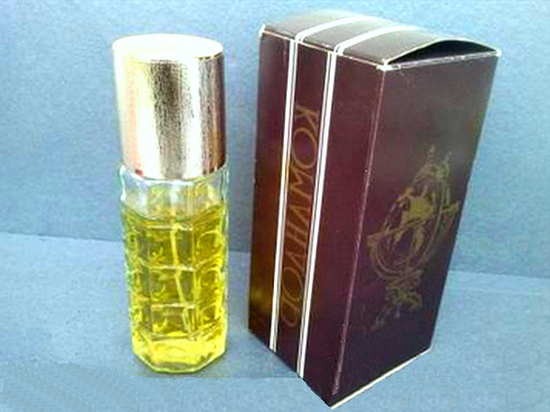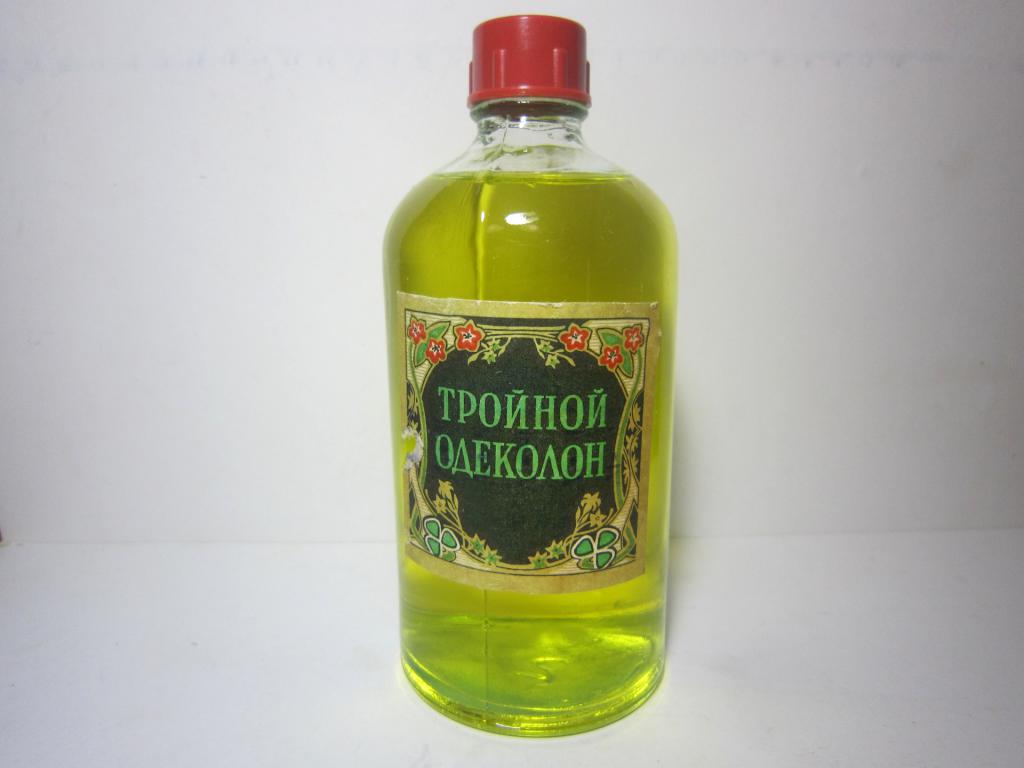Soviet time is an era that has sunk into oblivion, and for the moment, we probably only have memories of it. What are they concluded in, and how can we, at least for a moment, move to the times of our childhood or youth? In addition to the cute little things from the past, on the shelves of many modern people preserved Soviet colognes. Once our fathers and grandfathers used them, but today these aromas only remind us of what happened before.
Introduction
The USSR did not spoil the consumer. Most products were monotonous, extremely simple and unpretentious. Soviet colognes, of which there were very few and whose aromas were surprisingly similar to each other, did not stand out from this category. At that time, odors were extremely sharp, bright, very memorable and expressive. No subtle, woody-musky or floral-citrus aromas were mentioned. Ladies perfume of Soviet manufacture had a similar base, but the upper notes were painted in various "shades". As for the Soviet colognes for men, only the main note differed in them, and the train and stamina were almost the same for all.
We offer right now to take a short excursion into the past, to “smell out” the long-forgotten smells of the times of the Union and to remember why our parents were so fanatical and what we were striving for. We present a list of Soviet colognes with photos and a detailed description of aromas.
"Leopard"
A simple name, a simple bottle design, but at the same time scandalous and very bold at that time, the fragrance became a hit. "Bars" was released in the last years of the Union - in 1988, but at the moment it is still considered a vintage perfume for men. The Soviet cologne with such a straightforward name belongs to the category of aromatic. It is very fresh and at first glance it seems light, but on the body it opens up much more difficult. It is believed that Bars is the choice of extremely strong and confident men who are able to turn the head of any woman and achieve everything they want. In the smell, many note notes of "savagery" and "rampant."
"Smoke"
This is not just a Soviet cologne made in the mid-70s, but a whole perfume set. It includes a male fragrance, presented in a bottle in the form of a cigar, and a female one, which is enclosed in a vessel in the form of an ashtray. We must pay tribute to the name of this cologne of Soviet times, which, as they say, is fully justified. Both male and female bottles contain an explosive mixture of heavy components - wood, leather, sandalwood, and light floral notes. By applying it to the body, the first thing you feel is the aroma of soap, and then it transforms into something more viscous, rich and heavy.
"Carpathians"
The creation of Ukrainian perfumery factories, which has become more than popular throughout the Union. Manufacturers wanted to enclose in a bottle of strict rectangular shape all the beauty and uniqueness of the Carpathian nature, and they succeeded. The aroma falls into the category of woody, it also feels musky echoes. At the beginning of the composition, we hear notes of flowers and spring herbs, which attract with their simplicity and unpretentiousness. Then the perfume reveals its coniferous chord, filled with the smell of pines and firs, as well as wood. At the end, heavy tarry notes are heard that keep the Carpathians on the body throughout the day.
"Commander"
Most colognes of the Soviet Union were produced at the Novaya Zarya factory, and therefore all of them had similar aromas. A distinctive feature was the sharpness and saturation, which certainly did not resemble the works of "foreign" perfumers. Unfortunately, Soviet men could not afford French perfumes, but the aromas produced at the Riga Dzintars factory were quite affordable. One of the natives of this organization was the Soviet cologne "Commander", developed and released in the early 80s. The fluid was clothed in a rounded embossed bottle, which was also equipped with a spray bottle. Particular attention should be paid to the pyramid of aroma. It is built from notes of bergamot, lavender, orange blossom, patchouli, tobacco, sandalwood, musk, ambergris and oak moss. All this looks very much like modern compositions from which the colognes of our time are made. The only difference is that “Komandor” - the smell is very saturated, since the percentage of oils in it is much higher than in modern perfumes. Until now, the vintage version of the fragrance (there is also a re-release of 2002) is considered to be very popular and popular among the stronger sex.

"Myth"
One of the most popular Soviet men's colognes, which was not so easy to get. This is the same as the “Commander” - the creation of the Riga factory “Dzintars”, but this time the composition turned out to be much more unique, light and at the same time multifaceted. Let's first get acquainted with the pyramid of our vintage "Myth":
- Initial notes: lemon, orange and bergamot.
- Heart notes: neroli, vetiver, sandalwood, patchouli.
- Basic notes: musk, oak moss and galbanum.
Cologne could compete with French counterparts. He clung with his first light notes of citrus, then he bestowed the smell of spices. Tenacity and firmness was provided by tart musk and neutral moss. One of the most elite and worthy aromas of the Union, which was extremely rare in the crowd.
By the way, the Soviet cologne "Myth" is still being produced. The aroma pyramid, of course, has long been transformed into a lighter and more modern one, but the name and laconic rectangular design of the bottle remained the same.
"Consul"
Almost all the borders of the Soviet Union were tightly closed for the import of foreign goods. But sometimes there were exceptions, and one of those was the Soviet-era cologne called “Consul”. It was a joint work of the domestic corporation Soyuzparfumerprom and the French factory MARBEL. Elite perfumes, the equal of which could not be found. Representatives of the elite class of the Union strangled the "consul" exclusively; it was extremely difficult to get it. The aroma really differed from the "template" harsh and bitter Soviet counterparts. Let's get acquainted with the pyramid of this perfume.
- Top notes: elemi, bergamot, mandarin orange.
- Heart notes: Guaiac wood, nutmeg, patchouli, ginger, ylang-ylang.
- Base notes: frankincense, ambergris, musk.
This sophisticated, complex and very elegant smell still attracts confident men. You can find it at perfume auctions and in vintage boutiques.
"Zeus"
And this is the creation of the so-called perfumery house "Scarlet Sails", which was located in the city of Nikolaev. "Zeus" - toilet water for men, which is fully consistent with its divine and magnificent name. It is suitable exclusively for mature, strong, successful and very serious representatives of the stronger sex. It is an identification of status, experience, maturity, seriousness, rigor. Even at the time of the fascination with “heavy” and astringent perfumes, “Zeus” was afraid of young guys - the fragrance was the prerogative of older men. The composition consists of heliotrope, gardenia, cloves, sandalwood, geranium, coumarin, galbanum, lavender, patchouli, musk and oak moss. Despite all the “heaviness” of the smell, the perfume itself is dressed in a very interesting and can be said artistic bottle with antique ornaments. It gives out only the saturated yellow color of the liquid, which is completely not characteristic of light aromas.
"Sasha"
Well, now let's remember the exact opposite of Zeus. Cologne under the unpretentious name-name "Sasha" began to produce in the mid 70's, and continue to do so until now. But it is worth noting that modern versions of perfume faintly resemble a vintage fragrance, which we will now get to know. "Sasha" in the days of the USSR was a light, but at the same time tenacious and slightly tart smell. Perfume was referred to as aromatic wood, and in fact, it possessed both lightness and freshness, and burden, which made it multifaceted. In the basic chord of "Sasha" lay ambergris and noble skin, and the top notes were filled with aromas of violets and wood. The composition was simple and unpretentious, which, in fact, won the hearts of millions.
Particular attention should be paid to packaging design. The bottle itself is extremely simple, as is the smell inside it - a rectangular flask with a screw plastic cap. But on the label was a photograph of a young man who was randomly selected from the database. Periodically, the images of the so-called "Sasha" changed.
Fragrances of flowers
In the 80s, the Union began active production of colognes of the so-called "unisex". They could contain literally one single note, which always corresponded to the name. Among such Soviet colognes with floral names, one can recall "Jasmine", "Lily of the Valley" and "Carnation". These were flavored liquids with a high concentration of alcohol, which made it possible to use them even for treating wounds and abrasions. The fragrance was always light, it accurately conveyed the smell of a particular plant, it did not last long on the skin, so it did not irritate anyone.
Triple Cologne
Well, at the end of the article, we went to the leader, to the face and smell of the Soviet era - to the “Triple Cologne”. That's what we all call this painfully familiar, but at the same time light and unobtrusive fragrance, but few people know that its original name is “Cologne Water”. The perfume was created in 1709 by the Italian perfumer Johann Farina and was very popular throughout Europe. Later they learned about cologne in the Russian August family and the first deliveries of this fragrance to our homeland began.

However, in the Empire, they decided to make the perfume more original and added three essential oils to it - bergamot, neuroleum and lemon. So the cologne was called "Triple" and became more than popular among the royal nobility. The fall of the Empire and the formation of communism caused the cologne to descend into the proletariat and occupy its new niche there. In the pre-war years, “Triple” was considered an aroma refined and demanded. Later it was replaced by more interesting perfumes.